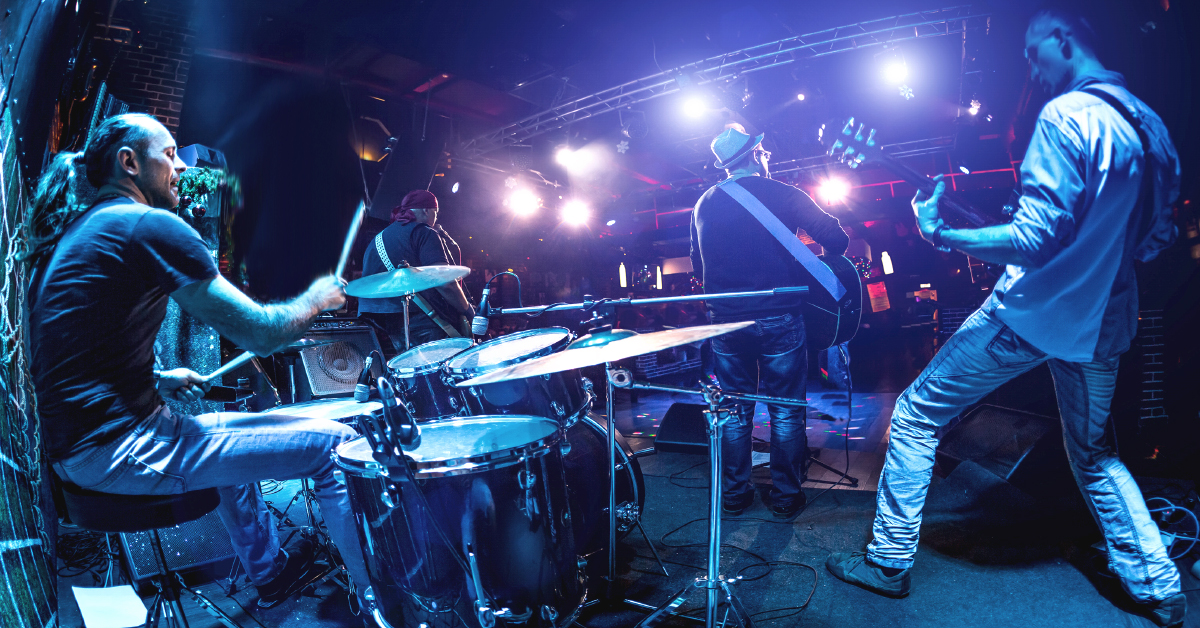Nowadays it is well known that being around loud noise over an extended period of time can damage your hearing. But why is this the case? And how much noise is too much
The hearing process
Inside the cochlea (the organ of hearing or “inner ear”) there are thousands of inner and outer hair cells – stereocilia. These are stuck to the base of the cochlea and suspended in fluid. As sound is transferred through the middle ear bones into the cochlea, the fluid in the cochlea moves. This in turn causes the hair cells to move back and forth. They send an electrical impulse from the inner ear through the auditory nervous system and into the brain. And this is how your brain hears the sound.
The brain can determine the pitch of the sound by which hair cells in the cochlea were activated. Higher pitched sounds don’t travel as far and therefore only activate those hair cells near the edge of the cochlea. Low pitched sounds travel farther and therefore will activate hair cells deeper in the cochlea.
When loud sounds travel through the cochlea the fluid moves much more violently. This can overstimulate the hair cells or even rip them out completely, which causes hearing loss. Your ears can usually recover from relatively short, infrequent exposure to loud sounds. Many of us have experienced not hearing well after a noisy concert but feeling okay the next day. But if the exposure is frequent or over a longer time, the chance of full hearing recovery diminishes. Think of your hearing a bit like an elastic band. If you stretch it out once or twice it will likely snap back to how it was. But if you keep stretching it, eventually it will be unable to regain its original shape
Noise levels
So how much noise is too much? The answer is complicated. People’s resistance to noise exposure can vary greatly. A person may fire a rifle once without hearing protection and suffer a permanent hearing loss as a result. Another person might work in noisy environments for 30 years and suffer minimal or no hearing damage. The Australian Government’s maximum recommendation for noise exposure in the workplace is 85 dB (decibels) for 8 continuous hours. But just because you don’t work in a factory or a nightclub doesn’t mean you’re not exposed to such levels.
Hair dryers, diesel trucks, garbage disposal, food blenders. All these are examples of noise exposure that can range from 80-90dB. There is also a physical doubling of sound as the decibels increase, making safe noise exposure non-linear getting louder. For every 3dB increase in sound, the safe exposure time is halved. Recommended exposure time for 88dB is 4 hours, 91dB is 2 hours, 94dB for 1 hour etc… A live symphony orchestra may vary from 70-95dB, lawn mowers can go to 100dB. Live rock concerts can peak at levels over 120dB. So really, it’s actually quite easy to be exposed to loud – sometimes dangerous – levels of noise.
Hearing protection
In order to protect ourselves from exposure, it is very important to wear hearing protection in noisy environments. Falls of Sound can create custom made earplugs to help block out noise. Full noise plugs can block out as much sound as possible – useful for construction sites of factories. “Musician Plugs” offer varying filtration options to reduce noise and protect while still hearing music or speech. These are useful for musicians of course – hence the name – but also dentists, hairdressers and other similar professions and environments. So if you have any concerns about noise exposure and protection, give us a call!

